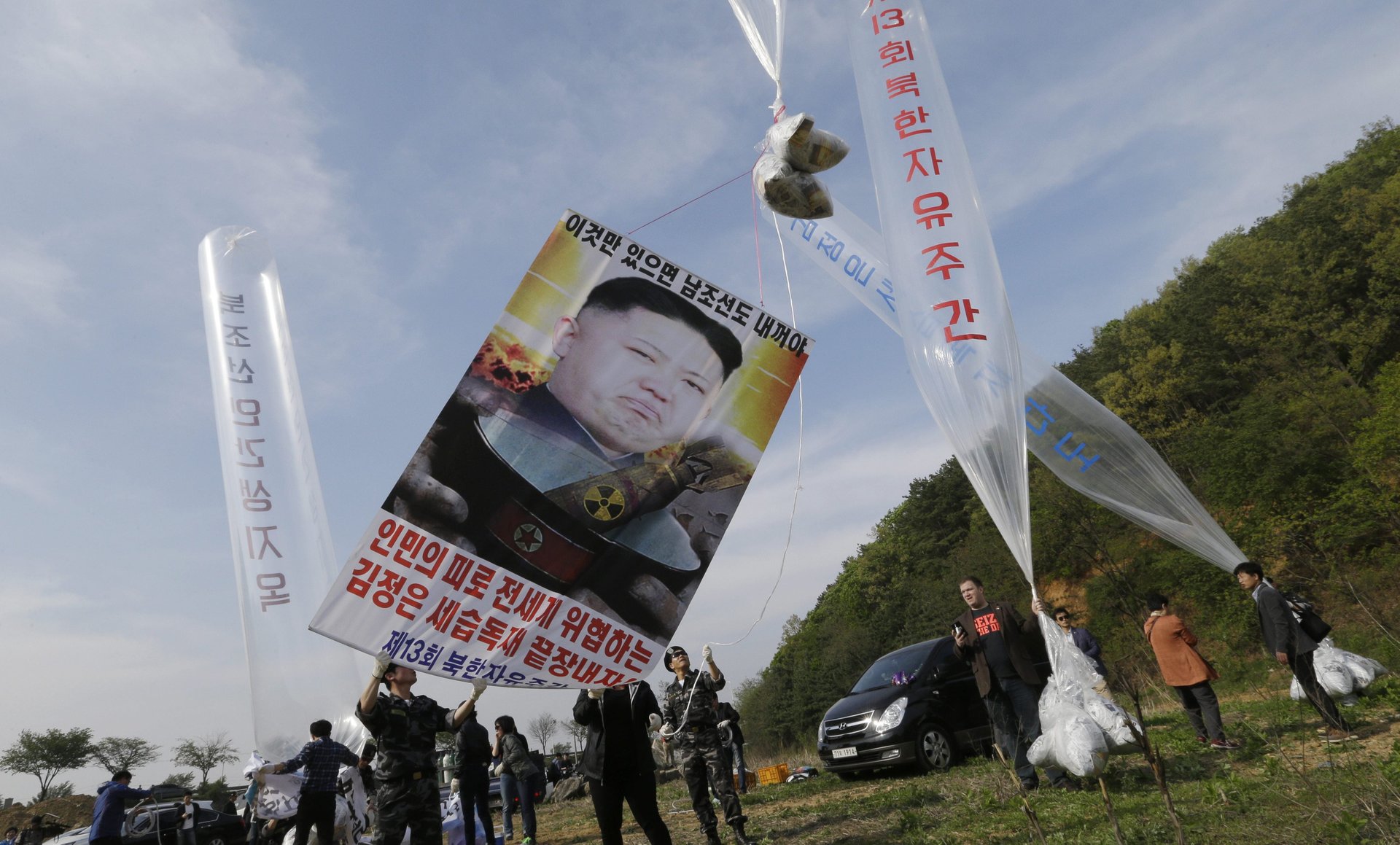Balloons and leaflets are the next potential flashpoint between the Koreas
North Korea already gives the president of South Korea plenty of headaches, what with the missile tests and all. The last thing Moon Jae-in needs now is Pyongyang going off about balloons drifting across the border.


North Korea already gives the president of South Korea plenty of headaches, what with the missile tests and all. The last thing Moon Jae-in needs now is Pyongyang going off about balloons drifting across the border.
It’s a real concern. The balloons in question are sent by private citizens—often activists who defected from North Korea—and carry leaflets criticizing the Kim Jong-un regime. While that may sound like a small issue to outsiders, it’s a major source of contention for Pyongyang, which imposes tight controls over information, and harshly punishes those breaking its rules. North Korea has insisted that for a dialog between the two nations to resume, the balloons must stop.
Moon worries the balloons could do worse than prevent talks. In the current environment, he fears they could spark unplanned conflicts that could escalate into all-out war. His unification minister, Baek Tai-hyun, said at a press conference today (Aug. 7), “Sending leaflets near the border could spark unnecessary military tensions, including a possible accidental conflict. It also poses a real threat to the safety of border-area residents.”
In South Korea, local media reported last week that shortly after Pyongyang launched its first-ever intercontinental ballistic missile (ICBM) on July 4, Moon ordered officials to look for ways to legally stop the sending of the balloons. As things stand now, the act is protected under freedom of expression, and groups continue to send balloons despite government requests to stop.
The balloons certainly didn’t help matters when Moon proposed on July 17 that talks between the nations’ military leaders be held on July 21. North Korea responded with the silent treatment, and the following week it launched its second ICBM, showing it could hit much of North America.
The balloons are not a new problem, and this isn’t the first time North Korea has expressed anger over them. In October 2014 it took some out of the sky using machine guns.